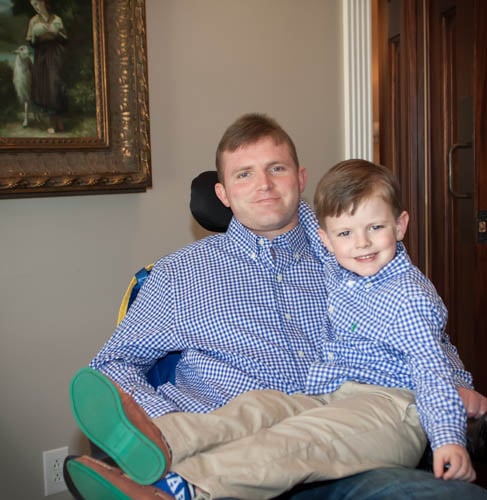Paralyzed Football Player Eric LeGrand Honored by Rutgers University
Rutgers football player Eric LeGrand, who was paralyzed three years ago in a game versus Army, has become the first player in the 144-year history of the university to have his jersey retired. At the halftime ceremony on September 14, 2013, LeGrand appealed to the crowd to support research to find a cure for paralysis.
This is a cause near and dear to the physicians of the Institute for Advanced Reconstruction. In addition to advancing research, the Institute performs unique, cutting-edge procedures for those with spinal cord injuries. This includes pressure sore management and pacemaker breathing.
Spinal cord injury often results in paralysis and loss of sensation to portions of the body. Individuals may lose sensation in the lower body and are therefore unable to detect when there is excessive pressure in these locations while sitting in a wheelchair or lying in bed. Over time, this problem progresses from skin breakdown to open wounds and even to life-threatening infections of the underlying bone.
In the past, the idea of recovering sensation in paralyzed individuals was believed impossible. But the reconstructive surgeons at the Institute for Advanced Reconstruction are performing a groundbreaking procedure intended to restore sensation to the hip and buttock areas in paraplegics with recurrent pressure sores. Nerve grafting is performed simultaneously with more traditional flap surgery to both cover the pressure sore with healthy skin and muscle mobilized from nearby areas and provide the opportunity for sensory recovery.
At the Institute for Advanced Reconstruction, the world-renowned phrenic nerve surgeons perform nerve grafts in conjunction with the placement of diaphragm pacemakers for those select patients who would otherwise not be candidates for ventilator weaning procedures.
Breathing pacemakers are indicated for patients with diaphragm paralysis who would otherwise be completely or partially dependent on mechanical ventilation. Pacemakers are possible as long as the phrenic nerve and diaphragm are intact.
Breathing pacemakers offer numerous advantages. In addition to the freedom and comfort, pacing patients are at much lower risk of upper airway infections, including ventilator-associated pneumonia (VAP). The underlying cause of ventilator dependency is often injury to the phrenic nerves – the nerves that control the contraction of the diaphragm muscles. Dr. Matthew Kaufman of the Institute is the only known surgeon to perform phrenic nerve surgery to restore function, and to date, he has done over 85 of these procedures. These include a number of them on spinal cord injured patients in order to create viability for the installation of pacemaker devices.

